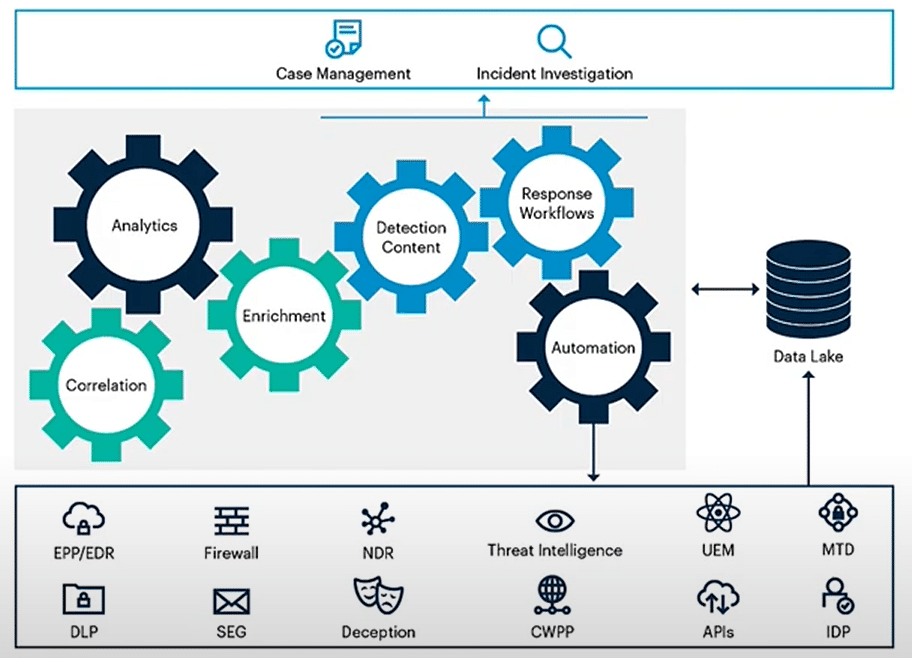As the threat landscape evolves at an unprecedented pace, many organizations face an increasingly complex security challenge: their cybersecurity stack is built in silos. Embracing Open XDR for modern cybersecurity can help unify these disparate systems and enhance overall security. Open XDR for modern cybersecurity is an essential strategy.
The firewall doesn’t talk to the endpoint protection. Email security operates independently from network monitoring. The SIEM is overwhelmed with noise from systems it can’t fully interpret.
The result is clear: lack of visibility, inefficient incident response, and unnecessarily high operational costs.
This is where Open XDR changes the game with its comprehensive approach to modern cybersecurity.
What Is Open XDR?
Extended Detection and Response (XDR) refers to the ability to collect, correlate, and act on threat data across multiple security layers — from a single, unified platform.
Unlike Closed XDR, which is tied to one vendor’s proprietary ecosystem, Open XDR is built to integrate across a wide range of technologies and data sources, regardless of vendor. This isn’t just an architectural difference — it’s a strategic shift that embodies Open XDR for modern cybersecurity.

The Problem With Siloed Security Architectures
Over time, organizations often accumulate point solutions for specific security needs. While effective in isolation, these solutions become liabilities as the volume and sophistication of threats increase.
Siloed security leads to:
- Lack of situational awareness: Threats go unnoticed because no one sees the full picture.
- Low operational efficiency: Analysts spend excessive time manually stitching together data.
- High total cost of ownership: Maintaining and integrating separate systems drains time and budget.
- Delayed response: When every second counts, manual workflows slow everything down.
Open XDR: A Strategic Solution
By centralizing detection and response across the entire security stack, Open XDR acts as the coordination layer for your entire security infrastructure. It doesn’t just provide visibility — it enables actionability, making it a vital part of modern cybersecurity.
Key advantages of Open XDR:
- Cross-source data correlation: Weak signals become strong indicators when combined.
- Automated incident response: Incidents are prioritized and addressed without manual intervention.
- Reduced false positives: Signal-to-noise ratio improves through centralized analysis.
- Preserve existing investments: Seamlessly integrates with tools you already use and trust.
Open XDR vs. Closed XDR: More Than a Technical Choice
It’s not enough for a vendor to call their solution “XDR.”
If the product can’t ingest and act on third-party signals, it violates the fundamental promise of XDR — unified, cross-layer threat detection and response.
Open XDR is defined by its ability to function as the central nervous system of a heterogeneous security environment.
Organizational Value Across the Board
Open XDR isn’t just a win for security engineers — it delivers measurable business value at every level:
- For executives: Better reporting, faster insights, lower risk exposure.
- For IT departments: Less complexity, fewer integration headaches.
- For security analysts: One interface, contextual insights, prioritized triage.
Real-World Use Cases
- Security consolidation: One dashboard, one workflow — regardless of vendor count.
- Operationalizing threat intelligence: Turn data into action, not just alerts.
- Automation and orchestration: Streamline responses across the board.
- Scaling lean security teams: Achieve enterprise-grade visibility.
Final Thoughts: It’s Time to Think Open
Working in silos is no longer sustainable.
Open XDR represents the next logical evolution in cybersecurity — from fragmented tools to integrated, intelligent defense. For modern cybersecurity challenges, Open XDR provides essential solutions.
Organizations investing in Open XDR don’t just gain better detection and response — they gain control, clarity, and scalability. In a world where threats are fast-moving and unpredictable, Open XDR for modern cybersecurity is not a luxury — it’s a necessity.

